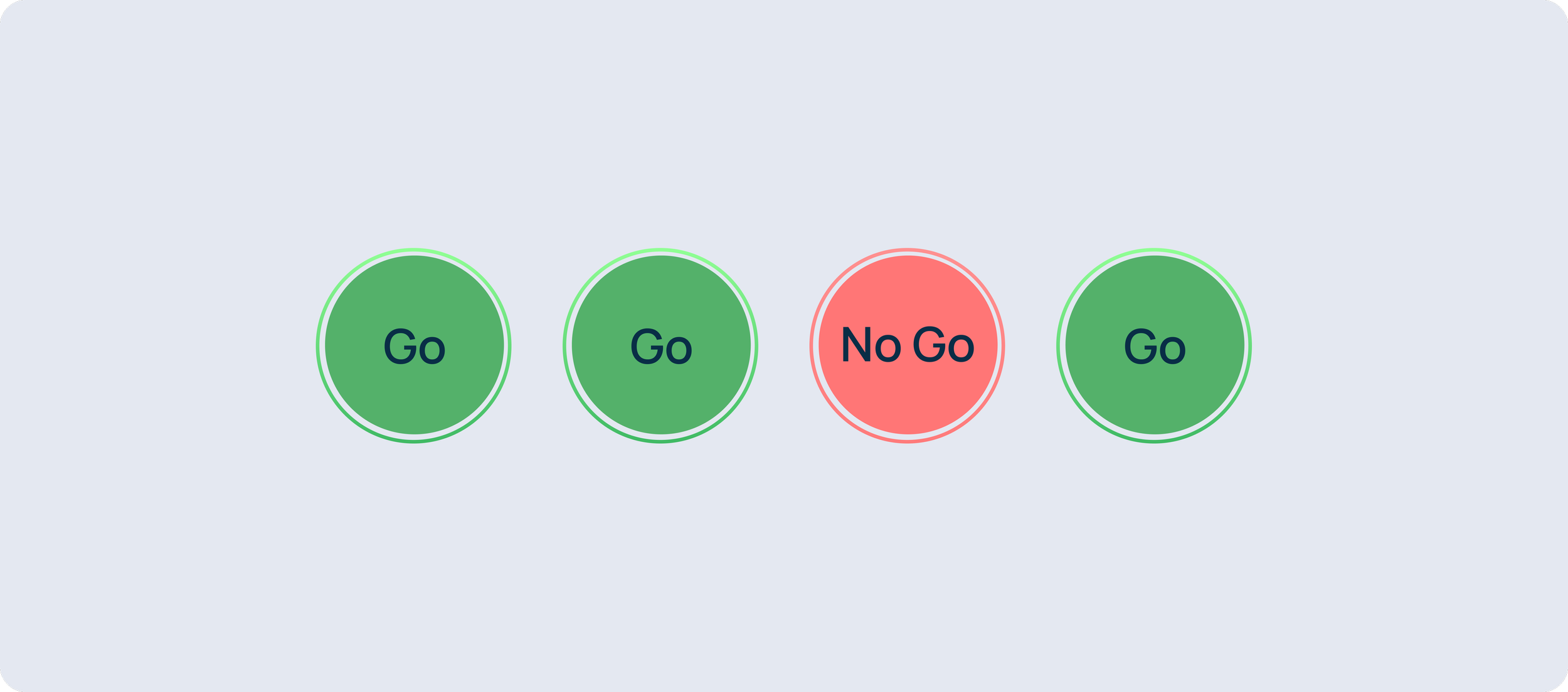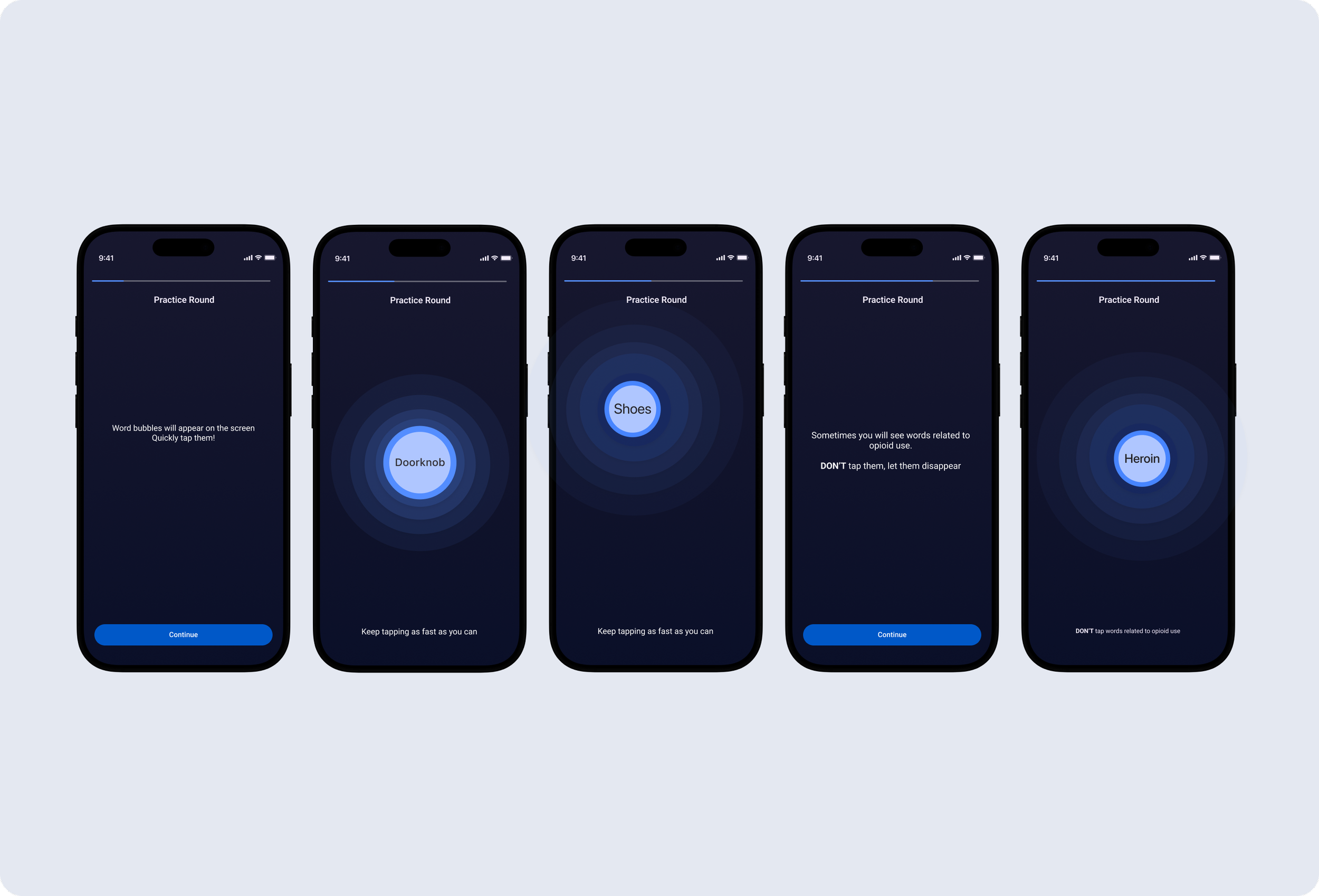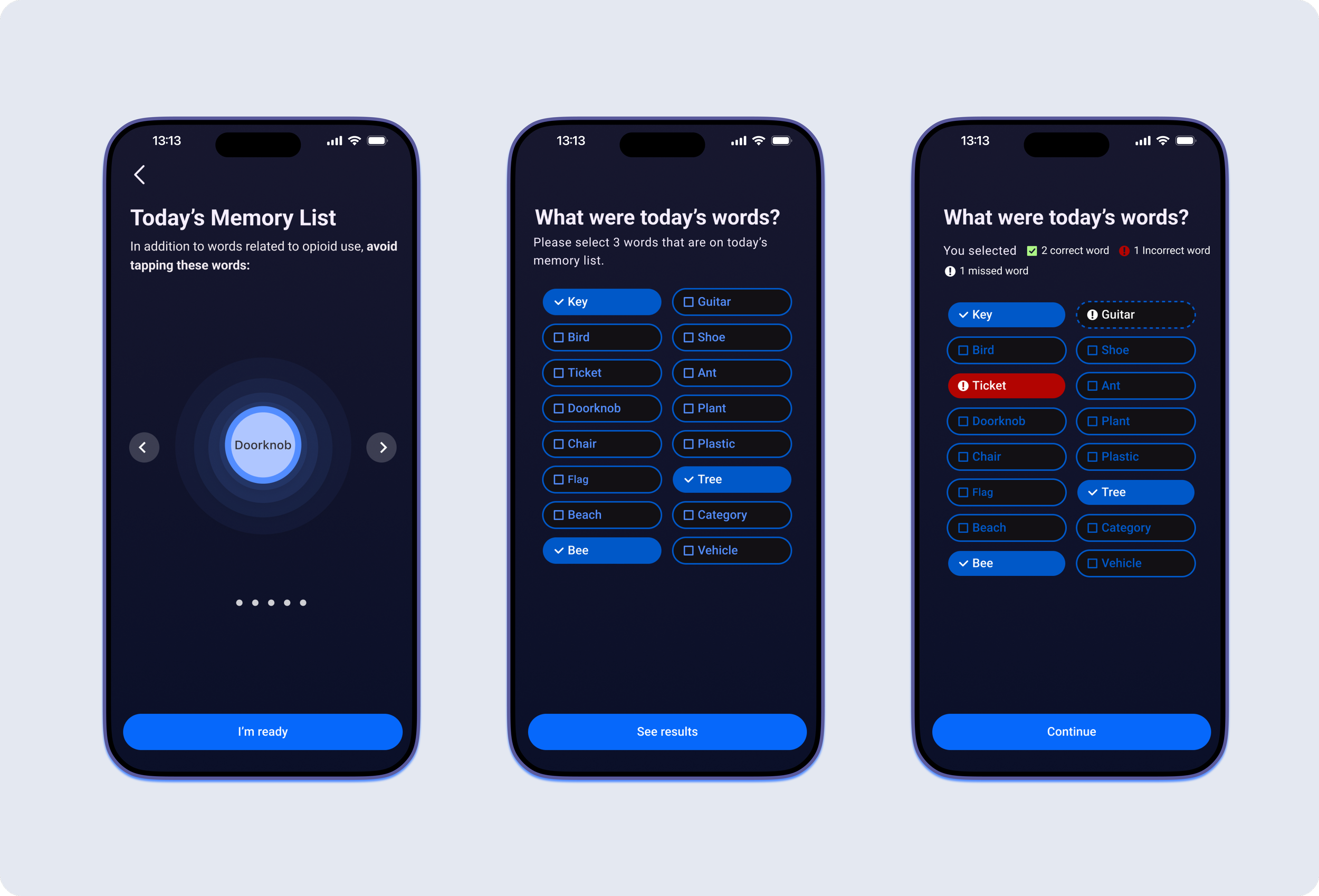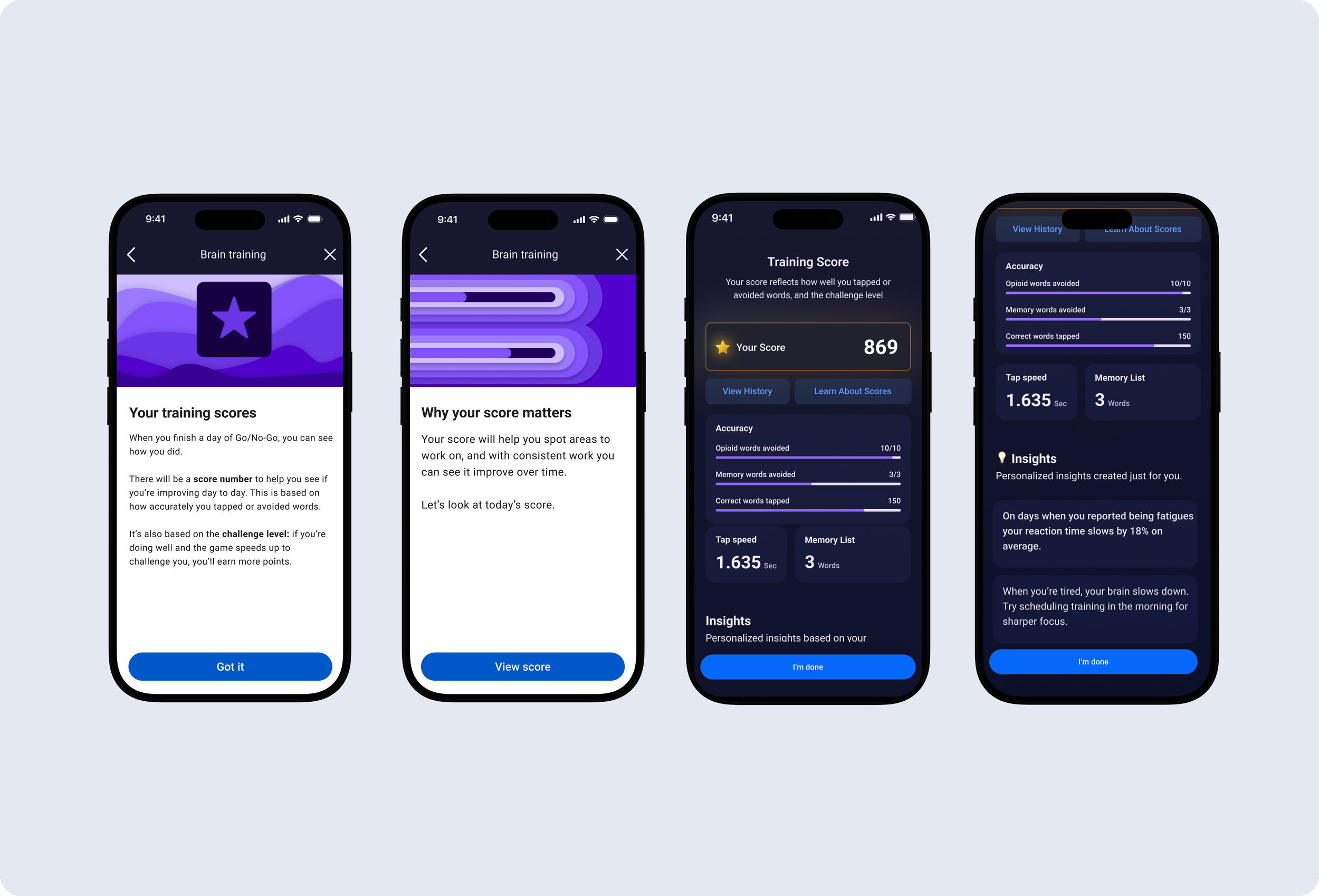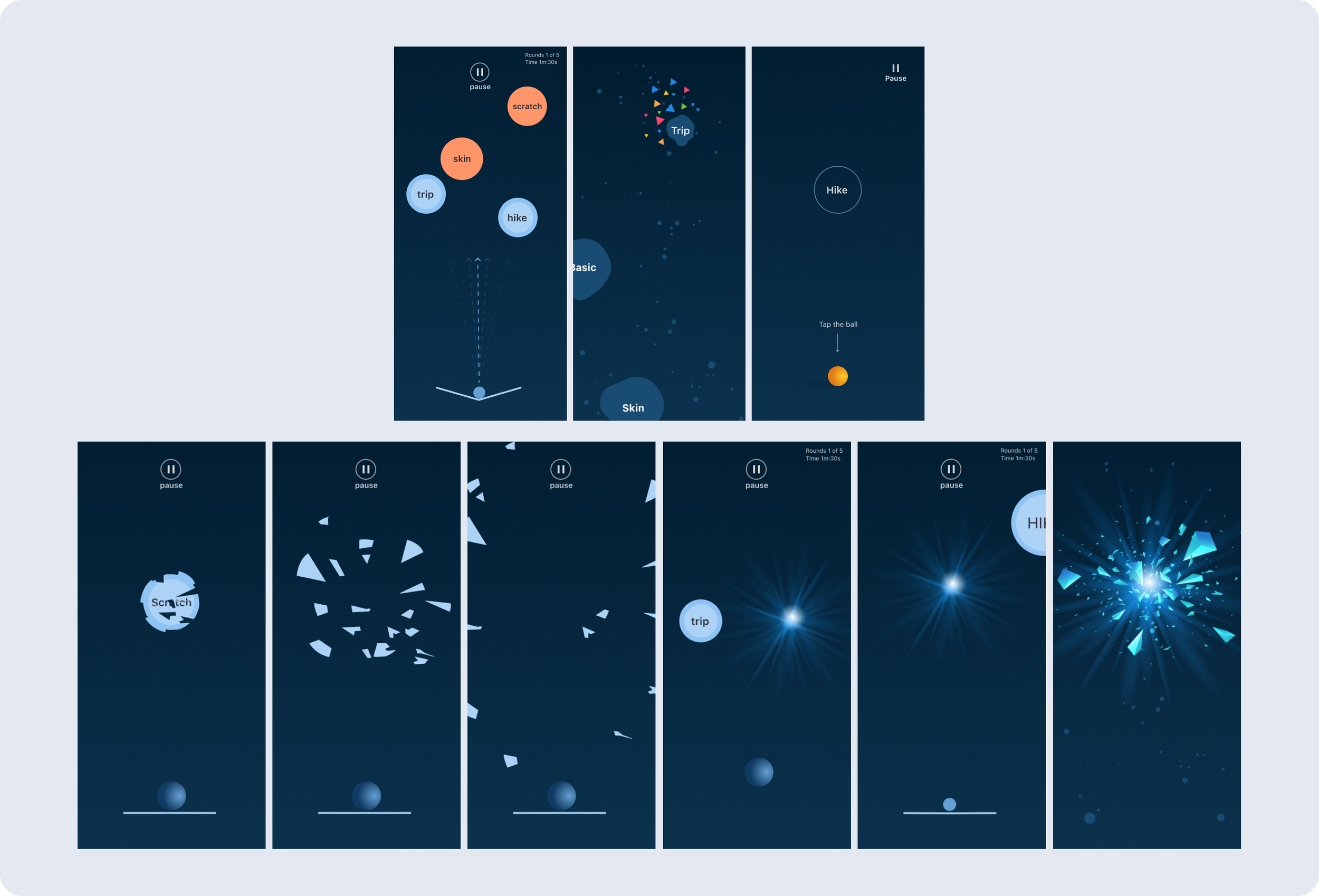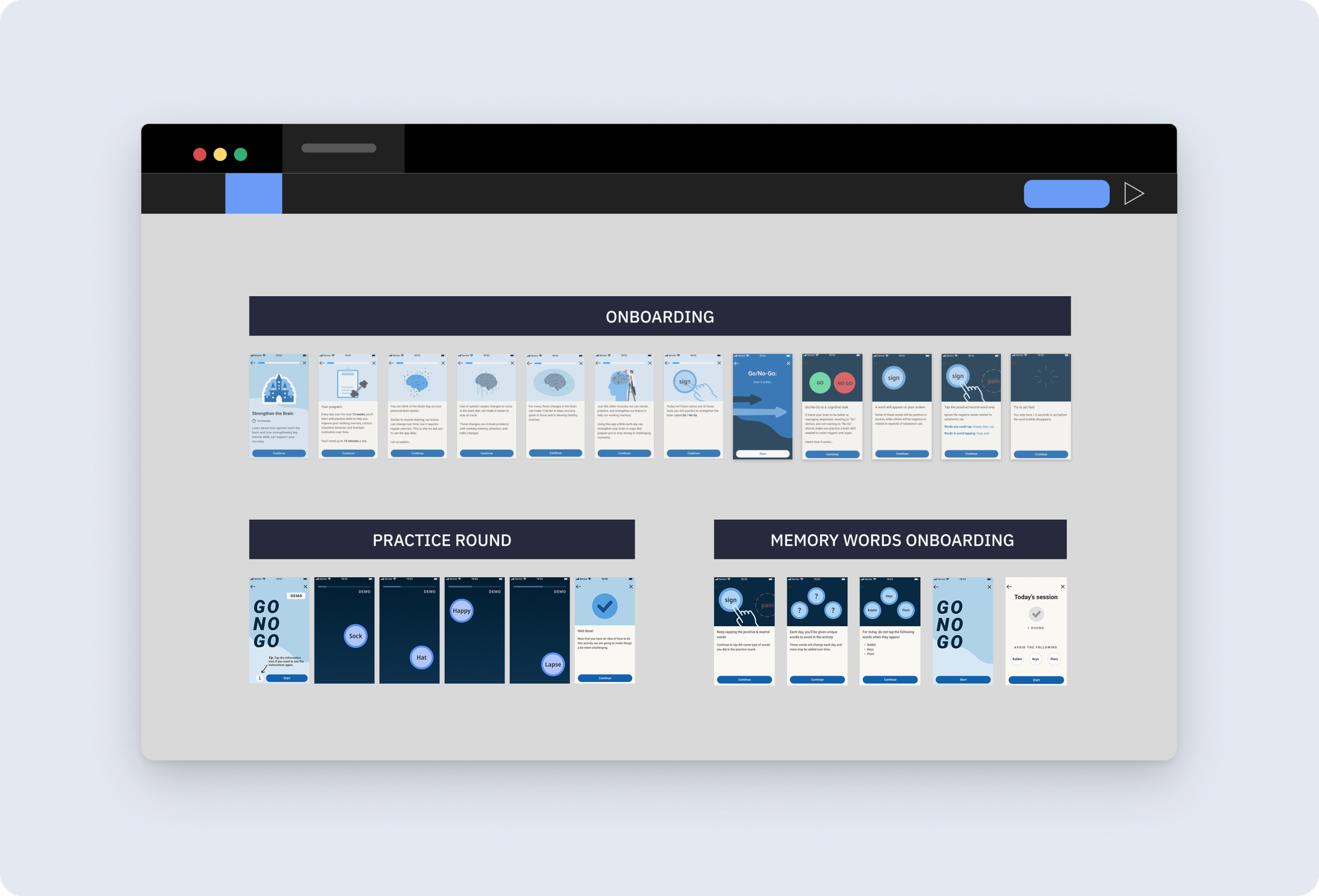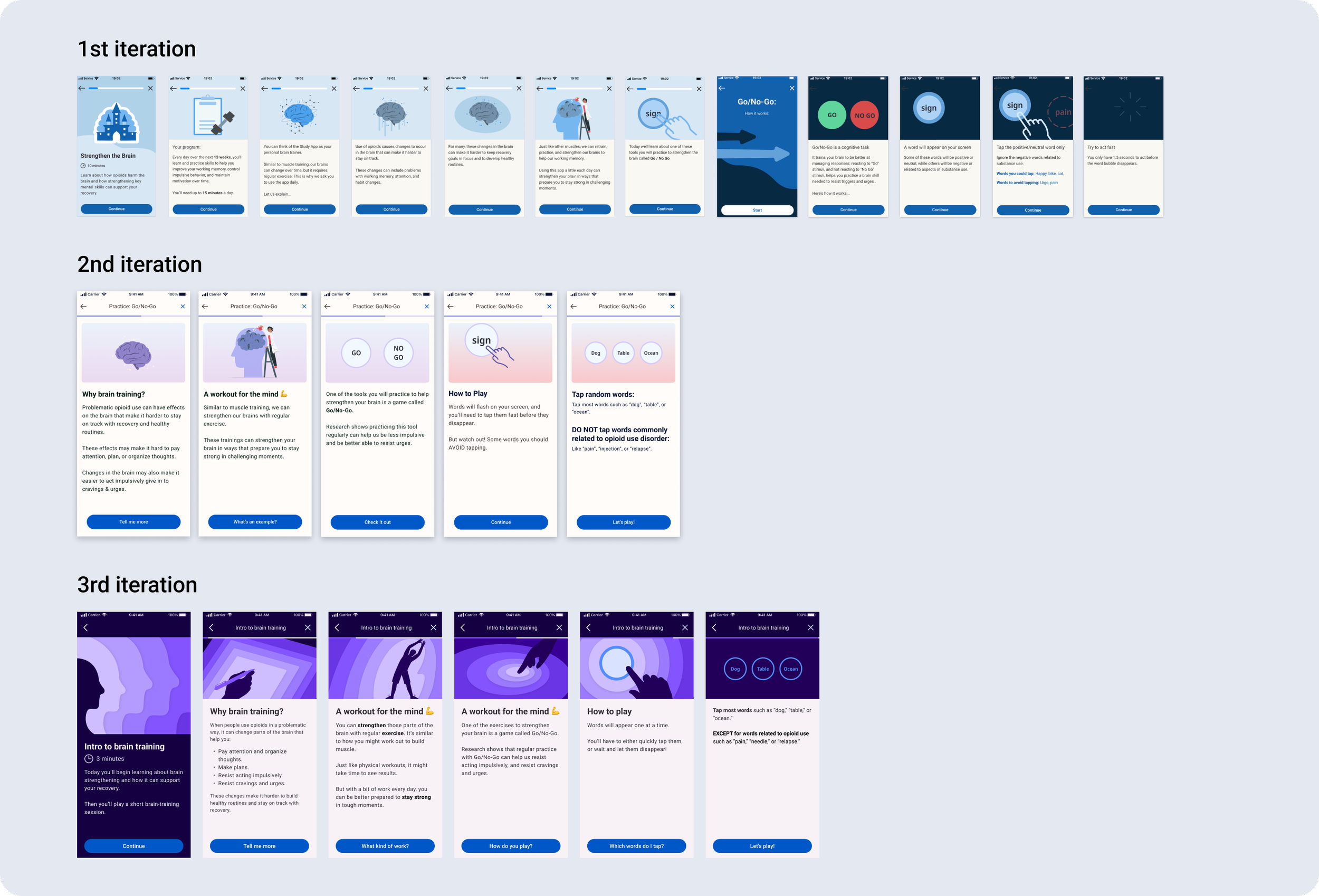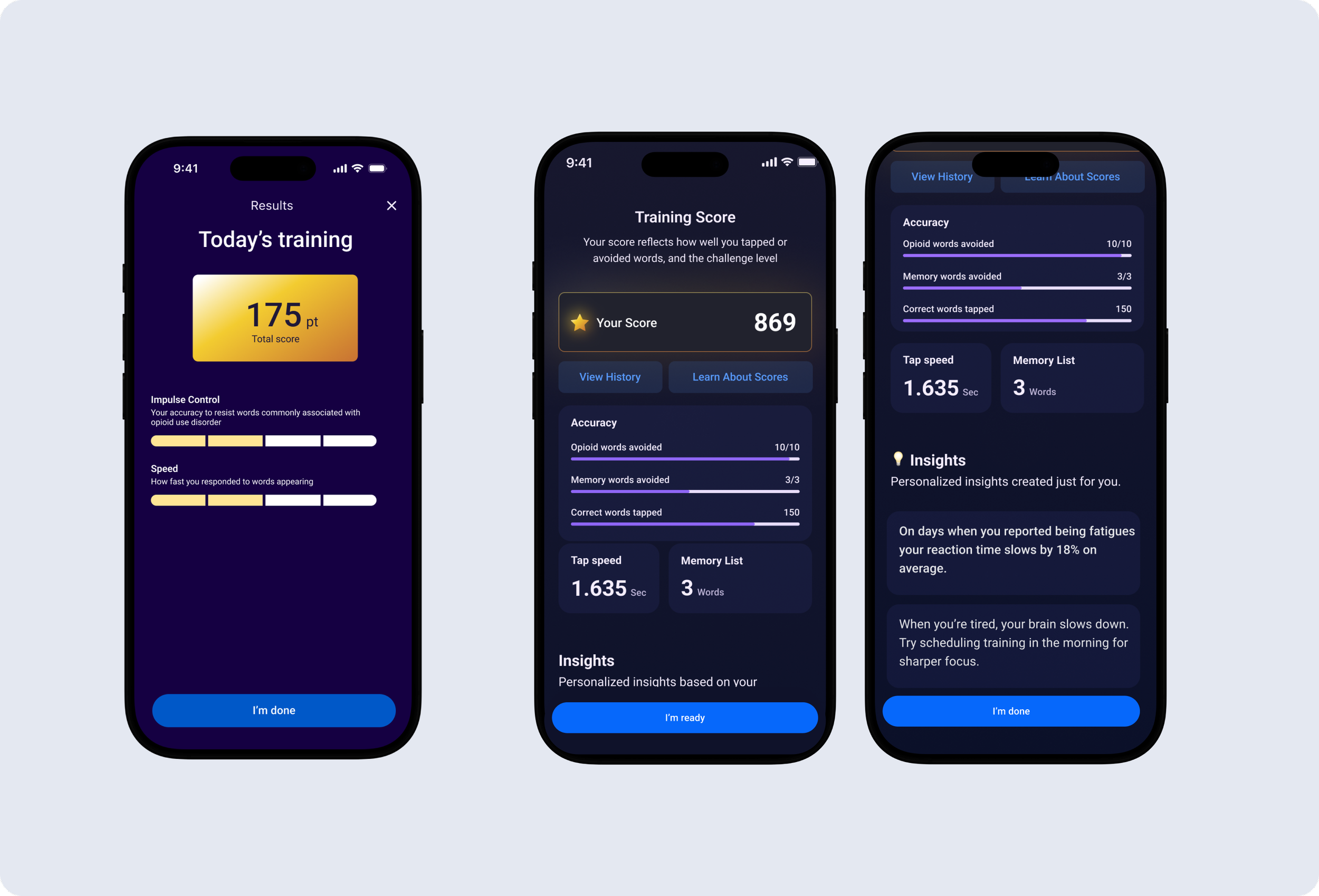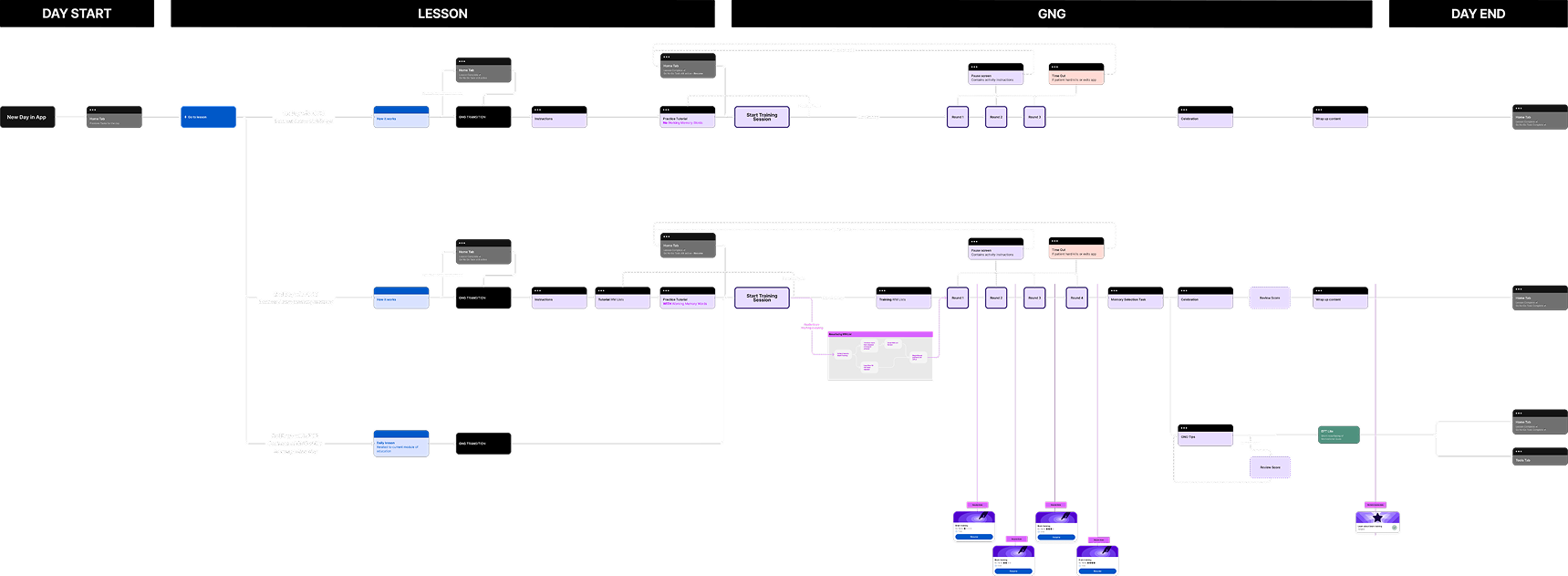Project background
When people use opioids in a problematic way, it changes parts of the brain that help with attention, memory, and impulse control. Having poor impulse control often leads to cravings and relapses.
The challenge was translating a clinical intervention into an easy to use and engaging activity.
Trust and motivation were crucial to the process. We only had one chance at a positive first impression; otherwise, users were unlikely to return.
Goal
The activity that helps patients control their impulses in an engaging way.
My role
Senior Product Designer
Visual design
UX flow mapping
Motion direction
User research synthesis
Team
Product Managers
Engineers
Science
Legal team
Regulatory team
QA
Timeline
October 2023 - October 2024
10/23 - 02/24 Discovery and research
02/24 - 05/24 Concept testing
06/24 - 10/24 UI and dev handoff
Solution
A brain-training exercise that works on improving impulse control by teaching patients to withhold responses to drug-related cues.
Activity and how it’s played
Go/No-Go serves as a coping tool to help patients manage cravings and stay on track in their recovery journey. Patients are presented with neutral and opioid related words. They are asked to avoid reacting to opioid words.
How does it help the patient
Autonomy - This activity helps patients feel accomplished
Working Memory - Improving memory
Impulse Control - helps practice the ability to not react to triggers
Engagement - Both a distraction tool and game like experience
Cravings Management - reduces automatic responses to triggers and serves as a distraction tool

How it started - discovery and research
We began by conducting in-depth exploratory research to understand the lived experiences, needs, and pain points of people in various stages of recovery.
25 patient interviews (60-minute sessions)
5 caregivers
5 nurses
5 peer advisors
Quantitative surveys with over 100 participants using dscout
Participants overwhelmingly enjoyed the idea of brain training, often finding it more rewarding and more challenging than initially expected from the overview. Most participants wanted a scientific explanation of how the game strengthens their brains.
“I’m interested in the finer details of the science behind these exercises. Whether these are conducted in clinical studies or what.”
- Research participant
Onboarding
Onboarding is crucial for treatment, as it educates first-time users on the benefits and effective use of the product.
Practice round
Even after onboarding, some participants faced challenges with the activity.
Confusion arose over task execution. Testing feedback indicated a need for clearer instructions or more support.
Working memory words
“Working Memory Words” is an additional activity in the Go/No-Go. activity. Patients are asked to remember and recall a list of specific words. This activity helps improve working memory.
Score
Participants want to track their performance. The Training Score at the end of the activity displays statistics on each patient’s progress.
Early design explorations
Initial ideas stem from the feedback from the science team and user interviews.
Wireframes onboarding - user testing
These designs were created during the exploration phase and helped gather valuable user research insights.
Iterations
Updates came from user feedback. The first version was too long and text-heavy, making onboarding tiring.
User testing
User testing revealed a desire for more performance and progress details. We added extra score information and exploration options.
Design system
Design system components annotation, and dev handoff
User journeys
Next steps - future concepts
Early explorations for the next steps. In order to make the game more engaging, we wanted to introduce different themes and animations.
Results and outcomes
High task completion and strong engagement were observed across multiple moderated usability sessions.
80%
Participants reported being very interested in brain training
70%
Participants said they would use the app daily
User Outcomes
Participants reported feeling more in control, encouraged by the idea that brain function can improve over time.
Testing revealed notable improvements in task accuracy and response speed across repeated sessions
Business Outcomes
Insights from early testing helped secure client buy-in and Phase 2 funding

